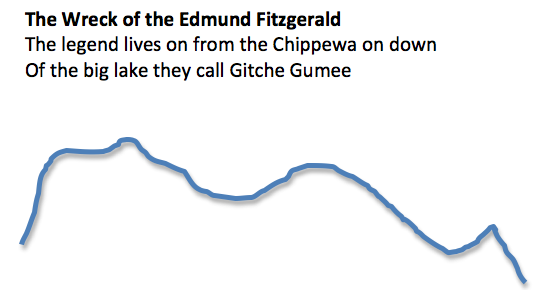Try these steps for isolating your song melody to see what kind of mood it’s really conveying.
“The Essential Secrets of Songwriting” eBook Bundle packages come with this eBOOK: “From Amateur to Ace: Writing Songs Like a Pro”.
 We all seem to acknowledge and understand the concept of “happy” music and “sad” music, even if we disagree on the specifics. But here’s an interesting question: Can a melody on its own sound “happy”, or sound “sad”? What can you do to a song melody to make the audience feel an emotion? And is that even possible?
We all seem to acknowledge and understand the concept of “happy” music and “sad” music, even if we disagree on the specifics. But here’s an interesting question: Can a melody on its own sound “happy”, or sound “sad”? What can you do to a song melody to make the audience feel an emotion? And is that even possible?
A while back I mentioned an interview that Paul Simon did, in which he said that he composes music first, and then lets the music “tell him” what the song is about. That’s a bit of what I’m talking about. But can a melody on its own convey mood? And if so, how do you do that?
The more you examine pop music from the past 5 or 6 decades, the more you become aware that melodic shape can enhance the kind of mood or disposition of a song. There is no rule about this, of course, and it’s at best a generalization. But for example:
- Songs where the lyrics and topic convey a strong feeling of determination or opinion often benefit from melodies that use lots of repeated notes. (Example: “Like a Rolling Stone” – Bob Dylan)

- Songs where the lyrics describe qualities of love and related emotions often feature an upward-moving melodic leap as an important motif. (Examples: “Love of My Life” – Freddie Mercury, “Danny Boy” – Traditional)

- Songs where the lyrics relate a story often move up and down by stepwise motion, using leaps at key emotional moments. (Example: “The Wreck of the Edmund Fitzgerald” – Gordon Lightfoot)

Of course, melody combined with other elements such as rhythm, tempo, key (major vs. minor), lyric, chords, and instrumental playing style all work together to produce a mood. No one element will operate in isolation from other elements; that’s an important principle of musical composition.
But it sometimes helps to take a song melody and isolate it as much as possible from a song’s other constituent parts, and see how it does on its own. If you really want to see if your melody is constructed to convey the song’s mood most effectively, try the following steps:
- On a piece of paper, write one word or a short phrase of words that categorizes the kind of mood you want the song melody to be portraying (Happy; sad; angry; triumphant; confident; peaceful; etc.)
- Sing your song melody to a neutral syllable like “la”, “doo”, or “na”. Sing it at the tempo you plan for the final version, and with a performing style that you intend.
- Ask yourself, “What is it about the melody that conveys the mood I’m aiming for?” This is the critical step. If you can’t think of anything you’ve done when composing the melody that conveys the mood you’re going for, it may be time to make some changes.
- Using the suggestions earlier in this article, make modifications to your melody that will enhance the mood. (i.e., add more upward melodic leaps if the song is a tender love song, add more repeated notes if it’s a song with a strong position or opinion on something… that sort of thing.)
Once you’ve done that, make whatever changes to the chords you feel are necessary to make your melodic changes work properly.
The benefit to isolating your melody as you work is that you get to hear it more clearly, and without the influence and effect that the other song elements will have. Once you add it back in to the mix, you’ve got a melody that’s closer to conveying the kind of mood you want the entire song to have.
______________
 Written by Gary Ewer. Follow on Twitter.
Written by Gary Ewer. Follow on Twitter.
“The Essential Secrets of Songwriting” eBook Bundle packages look at songwriting from every angle, and have been used by thousands of songwriters. How to use chords, write melodies, and craft winning lyrics. Have you seen today’s Deluxe Bundle deal?











Pingback: Getting a Grip on Song Melodies | The Essential Secrets of Songwriting Blog
I think The Songs Melodic Contour is as important as the Scale or Mode
chosen for the song. if we take too popular sixties instrumentals “APACHE”
a massive hit for The Shadows The minor key and the modulating between
A minor to C major conjurers up the exact mood for the theme.
The melodic range of this song
would never make a Vocal Hit, but as an instrumental, for me it distinguishes
the difference between a Vocal Hit and a Guitar Instrumental hit the range
of this song shows off two octaves plus.on those fabulous Fender Stratocast
Guitars.
The Happy Sound of songs like “Amarillo” would never make an instrumental
Hit but as a Singalong Vocal it’s ideal, using basic major chords plus a catchy
modulation on the middle eight.
At th end of the day some songs work with in an eleven note range whilst
others use much less. Where as a song like “Welcome To My World”
sound too monotonous for today’s market, owing to every phrase descending
apart from the bridge.